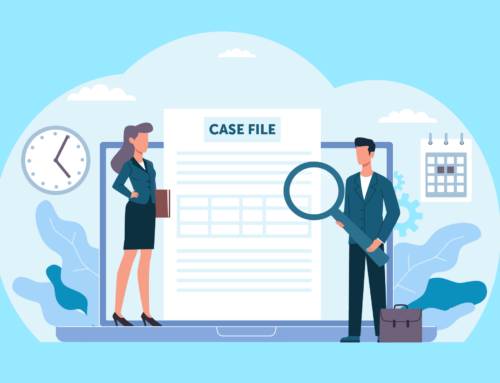Why Measure Risk?
The Northpointe Suite • An equivant product

Hint: It’s Key to Responsive Supervision
 With limited time and resources, effective supervision becomes a balancing act. Who needs what resources? Who is most likely to reoffend? Which groups should be separated?
With limited time and resources, effective supervision becomes a balancing act. Who needs what resources? Who is most likely to reoffend? Which groups should be separated?
Through decades of research, we’ve found that the answer to all three comes down to one thing: Risk. When you can nail down each individual’s risk profile, you can more effectively balance your caseload, get the individuals under your supervision on the right track, and keep your community safe.
Understanding each individual’s risk level allows you to triage your population, prioritize resources for high-risk offenders, determine proper supervision levels and implement effective strategies.
Under-supervising and over-supervising can be equally detrimental, as can commingling risk groups. Whether a person is incarcerated or under supervision, some of the basic principles are the same: Mixing repeat offenders with first-timers and mixing high-risk offenders with low-risk offenders simply doesn’t work. It’s harmful for the non-violent, low-risk offenders, and it’s potentially harmful for the communities they re-enter.
That’s why accurate classification matters. We have to know what we’re dealing with in order to properly supervise offenders in a way that promotes positive outcomes for both the individuals and their communities.
“Classification is all about creating order from disorder,” said Dr. Tim Brennan, Northpointe co-founder and expert criminologist. Dr. Brennan has been working for decades on creating valid, objective classification systems for people at all stages of the justice process.
Particularly for offenders who are under supervision, getting the right mix of resources in place is key.
“It’s called the responsivity principle,” Dr. Brennan said. “We’ve got to figure out exactly what this person’s needs are, and what are the things that are critically important for them to solve as they move back into the community. Then, we can match the individual’s profile of issues to a profile of services and interventions, and if we can get the right match, it’s far more effective.”
So, how do you classify the individuals under your supervision and hit the right match?
The best way to determine a person’s risk and needs is to consider three key data points, all of which are part of the Northpointe Suite Risk & Needs Assessment:
1. Risk Potential: Consider objective measures of the person’s overall risk level using scales that break out potential risk of violence, recidivism and failure to appear.
2. Risk and Need Profiles: This part of the assessment helps you zero in on the criminogenic factors in the person’s history that form the basis for a needs assessment and a strong treatment plan.
3. Explanatory Typology: No one is an exact fit for one of the eight typologies of offenders, but understanding which typologies are the closest combination for a particular individual can help establish the broader context for a supervision level or intervention.
In combination, these three data points—risk, needs and type—can help you craft an individualized supervision plan that works for both the offender and the community.
If your agency is using the Northpointe Suite, this data is already available to you and can be easily pulled together for the individuals on your caseload. Look first for which offenders are your most high-risk to prioritize their resources and programming, and then ensure they’re separated from lower-risk offenders. Appropriate supervision levels and separation of risk groups are essential for effective supervision.
If you’re not using the Northpointe Suite yet, let’s get started! Determining risk in an objective way will help you better allocate your resources, avoid commingling your risk groups, and increase public safety by lowering the likelihood of re-offense.
When you’re struggling with the supervision balancing act, turn to the data, and focus on risk. With the right information in hand, you can find a balance that works for your agency, your caseload and your community.
Get to know the Northpointe Suite, and find your balance through data. Contact us today to get started or to learn how to use the Northpointe Suite in new ways to meet your supervision needs.





